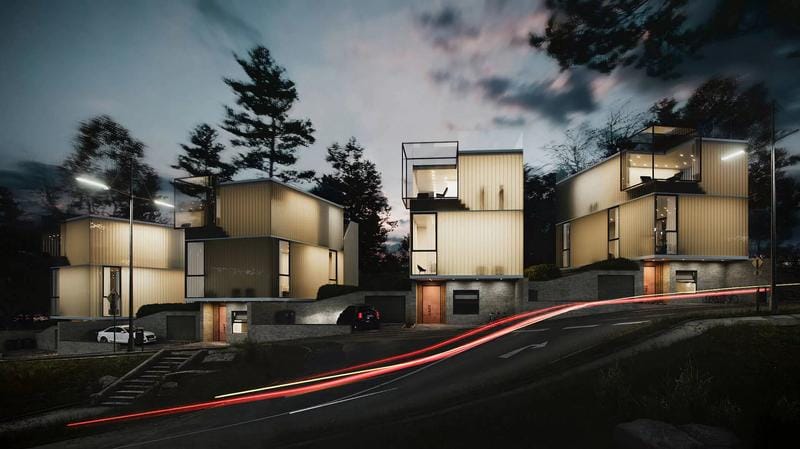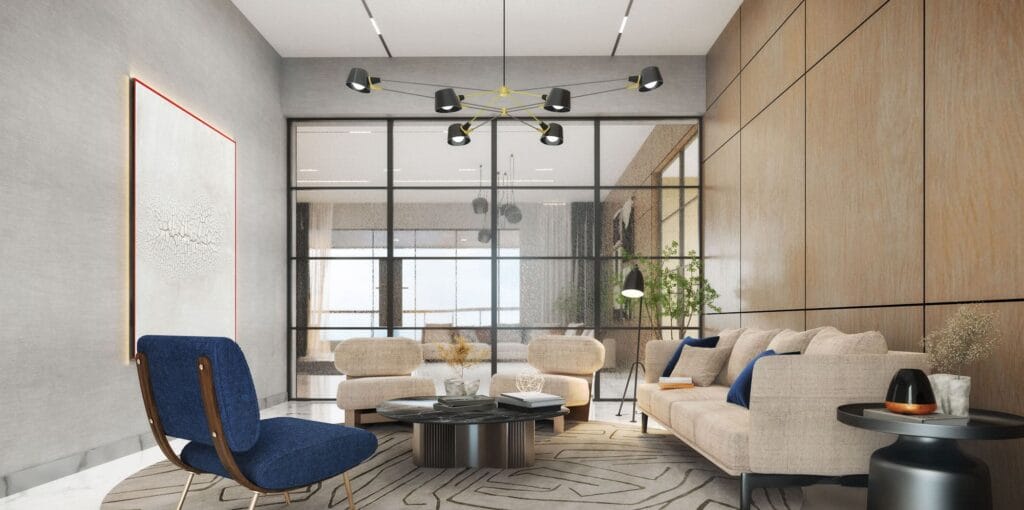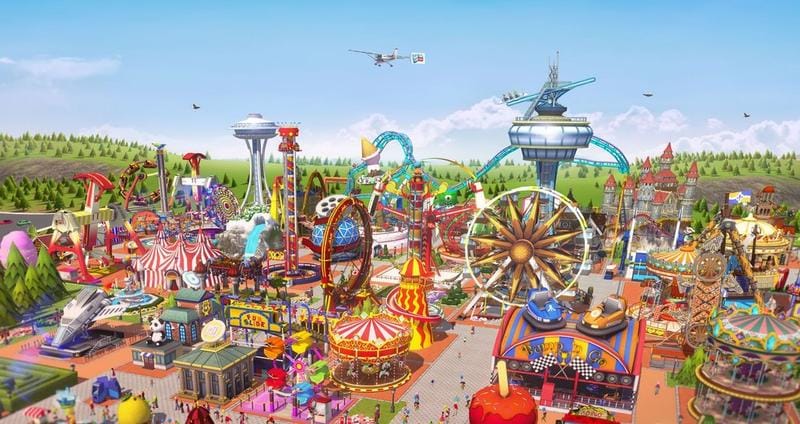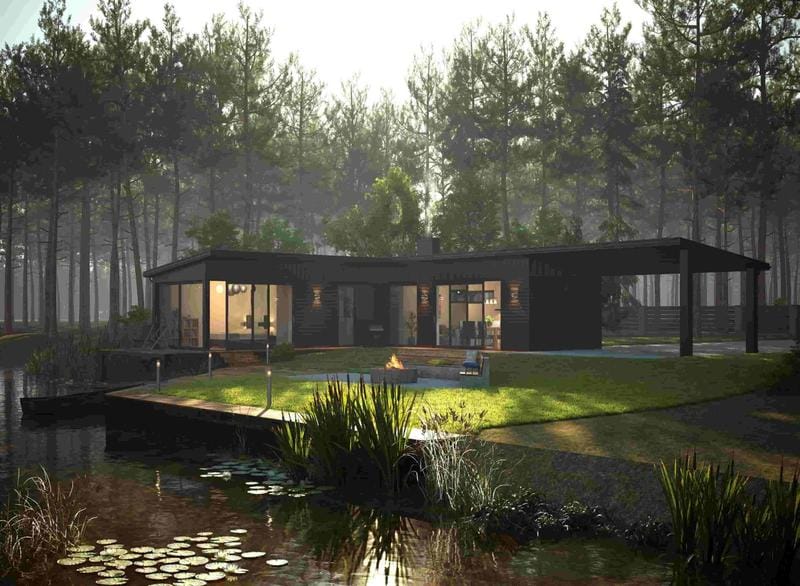Immagina questo: Hai riversato il tuo cuore e la tua anima nel progettare un edificio che non è solo funzionale, Ma una vera opera d'arte. Ora, Come mostri il mondo (e soprattutto, potenziali investitori o acquirenti) quello che immagina? Ecco dove rendering architettonici Si accomodi. Sono come finestre magiche nel futuro, mostrando una vista realistica di un edificio prima ancora che esista. Ma prima di lasciarti trasportare dalle possibilità, Pronuncia una grande domanda: Quanto costa questo?
Sommario
Ammettiamolo: Comprensione dei costi di rendering architettonico è la chiave per chiunque sia coinvolto in un progetto di costruzione. Che tu sia un architetto, uno sviluppatore, un appaltatore, O anche un proprietario di una casa che sogna un rinnovamento, Devi sapere in cosa stai entrando. Questa guida è qui per aiutarti a evitare qualsiasi sorpresa di budget e assicurati di ottenere il miglior blash per il tuo dollaro.
Il rendering architettonico utilizza software per creare immagini realistiche di edifici e paesaggi. È come effetti speciali per l'architettura, permettendoti di vedere un edificio finito molto prima dell'inizio della costruzione. Ma perché è così importante, E cosa rende il prezzo del prezzo?
Non si tratta solo di belle immagini! Questa guida ti guiderà attraverso tutto ciò che devi sapere sui costi di rendering architettonico, tra cui:
- Le diverse cose che influenzano il prezzo.
- Intervalli di prezzo tipici per diversi tipi di progetti.
- Come capire se è un buon investimento.
- Suggerimenti per ottenere un preventivo accurato.
- Modi per risparmiare denaro senza sacrificare la qualità.
Questa guida è per tutti: architetti, sviluppatori, Pro di proprietà immobiliari, e proprietari di case, Chiunque voglia dare vita alla propria visione architettonica. Pronto a ritirare il sipario e ottenere il vero scoop sui costi di rendering architettonico? Ci immerciamoci!
Pensa a questo come alla tua tabella di marcia per navigare nel mondo dei costi di rendering architettonico, Aiutarti a fare scelte intelligenti che ti aiutano a raggiungere i tuoi obiettivi del progetto.
 Perché investire nel rendering architettonico? Più che una bella foto
Perché investire nel rendering architettonico? Più che una bella foto
Potresti pensare, “Va bene, I rendering sembrano belli, ma valgono davvero la spesa?” La risposta, chiaro e semplice, è sì! I rendering architettonici di alta qualità sono più che solo zuccheri. Sono strumenti potenti che possono aumentare il successo del tuo progetto in diversi modi.
Aumentando il marketing e le vendite
Pensa ai rendering come alla tua arma segreta per attirare l'attenzione e la chiusura degli affari:
- Attirare investitori e acquirenti: Immagini realistiche e accattivanti aiutano i potenziali investitori e acquirenti a vedere il vero potenziale del tuo progetto. È più facile farli eccitare quando possono vedere in cosa stanno investendo.
- Proprietà pre-sell: I rendering consentono ai clienti di immaginare le loro case o uffici futuri prima ancora di essere costruiti. Ciò può portare a vendite più veloci e prezzi più alti.
- Crea materiali di marketing killer: I rendering di alta qualità rendono il tuo sito web, brochure, e le presentazioni si distinguono dalla folla.
- Mostra il potenziale: I rendering comunicano efficacemente la visione architettonica di una proprietà, Dare ai potenziali acquirenti una chiara comprensione del suo design e appello.
Migliorare la progettazione e la comunicazione
I rendering sono un modo fantastico per assicurarsi che tutti siano sulla stessa pagina:
- Comunicazione chiara: Ti aiutano a mostrare chiaramente le idee del tuo progetto ai clienti, appaltatori, e altre parti interessate.
- Buy-in del cliente: È molto più facile eccitare i clienti per il tuo design quando possono vederlo in un rendering realistico.
- Esplora le opzioni di design: Sperimentare con materiali diversi, colori, e illuminazione per trovare l'aspetto perfetto prima dell'inizio della costruzione.
Aumentare l'efficienza del progetto e tagliare il rischio
I rendering possono anche farti risparmiare tempo e denaro a lungo termine:
- Approvazioni più veloci: I rendering chiari e professionali possono accelerare il processo per ottenere permessi e approvazioni di costruzione.
- Meno errori: Individuando i difetti del design all'inizio del processo di rendering, Puoi prevenire costosi errori durante la costruzione.
- Flusso di lavoro più fluido: I rendering possono aiutare gli architetti a organizzare il loro flusso di lavoro e mantenere i progetti in pista.
Distinguersi dalla folla
Nel mercato competitivo di oggi, È essenziale avere un vantaggio. I rendering di alta qualità possono aiutarti a distinguerti, attirare più clienti, e vincere più progetti.
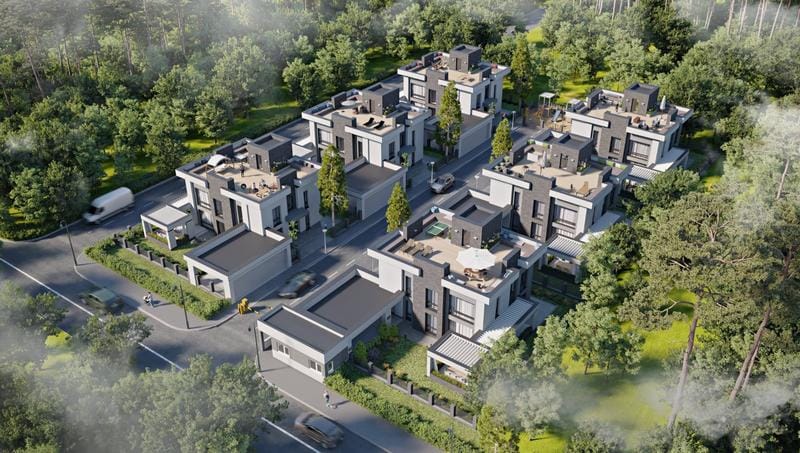 Tipi di servizi di rendering architettonico: Scegliere la visualizzazione giusta per la tua visione
Tipi di servizi di rendering architettonico: Scegliere la visualizzazione giusta per la tua visione
Il rendering architettonico non è una soluzione unica. Ci sono in realtà diversi tipi di servizi di rendering, ognuno progettato per mostrare il tuo progetto in un modo unico. Comprendere queste opzioni ti aiuterà a scegliere la vista giusta per soddisfare le tue esigenze e budget specifici.
Rendering esterni: Mostrando l'esterno
I rendering esterni si concentrano all'esterno di un edificio, mostrando il suo stile architettonico, paesaggio, e come si adatta a ciò che circonda. Questi sono fantastici per:
- Evidenziando il design e i materiali dell'edificio.
- Presentazione del paesaggio e delle caratteristiche esterne.
- Trasmettendo l'atmosfera e la sensazione del quartiere.
Quando si crea rendering esterni, È importante prestare attenzione a dettagli come l'illuminazione, tempo atmosferico, e l'ambiente circostante. Per edifici commerciali, Questi sono importanti.
Rendering interni: Entrando nel design
I rendering interni ti consentono di esplorare l'interno di un edificio, Concentrarsi sul layout, mobilia, illuminazione, e arredamento. Questi sono perfetti per:
- Visualizzazione del flusso dello spazio e come si collegano le sale diverse.
- Selezione di mobili e materiali.
- Creare un umore e un'atmosfera.
La quantità di dettagli necessari per i rendering interni può variare a seconda del progetto. Uno spazio minimalista potrebbe richiedere meno dettagli di uno riccamente decorato.
3P Planimetrie: Una vista a volo d'uccello
3Le planimetrie d danno una vista tridimensionale del layout di un edificio. Ti dà una sensazione molto migliore per le dimensioni e la relazione spaziale dello spazio. Sono fantastici per:
- Capire come le stanze si collegano e fluiscono insieme.
- Visualizzare il posizionamento dei mobili e la pianificazione dello spazio.
- Ottenere una chiara panoramica dell'intero edificio.
Questi piani sono come prendere una vista a occhio di uccello su un edificio, offrendo una chiara comprensione dell'intero spazio.
Animazioni architettoniche: Dare vita ai disegni
Le animazioni architettoniche portano i rendering al livello successivo aggiungendo movimento e narrazione. Queste immagini dinamiche possono includere:
- Le telecamere in movimento che ti guidano attraverso l'edificio.
- Elementi animati come persone, auto, e paesaggio.
- Musica, effetti sonori, e testo per migliorare l'esperienza.
Questi sono un ottimo modo per “esperienza” l'edificio prima che sia costruito, dandoti una forte connessione emotiva.
Tour virtuali: Esplorazione immersiva
I tour virtuali portano ulteriormente l'immersione, permettendo agli spettatori di esplorare un edificio al proprio ritmo. Utilizzando viste a 360 gradi ed elementi interattivi, I tour virtuali ti permettono:
- Cammina attraverso diverse stanze e spazi.
- Ingrandisci i dettagli.
- Cambia le opzioni di illuminazione e arredamento.
Questo è un modo perfetto per mostrare grandi progetti a potenziali investitori o acquirenti.
360 Panorami: Una vista completa
360 panorami forniscono un completo, Vista avvolgente di uno spazio. Sono perfetti per mostrare la sensazione generale di una stanza o di una zona esterna. Gli spettatori possono ruotare la vista per vedere ogni dettaglio, facendolo sentire come se fossero effettivamente lì.
3D Rendioni aeree: Il quadro generale
Questi rendering forniscono un paesaggio. Sono meglio usati quando si desidera dare un look panorama panoramico.
3D REPRITTO DI PRODOTTO
Utilizzato per visualizzare eventuali nuovi prodotti, sistemi di attrezzature, macchinari, e anche per visualizzare interi paesaggi.
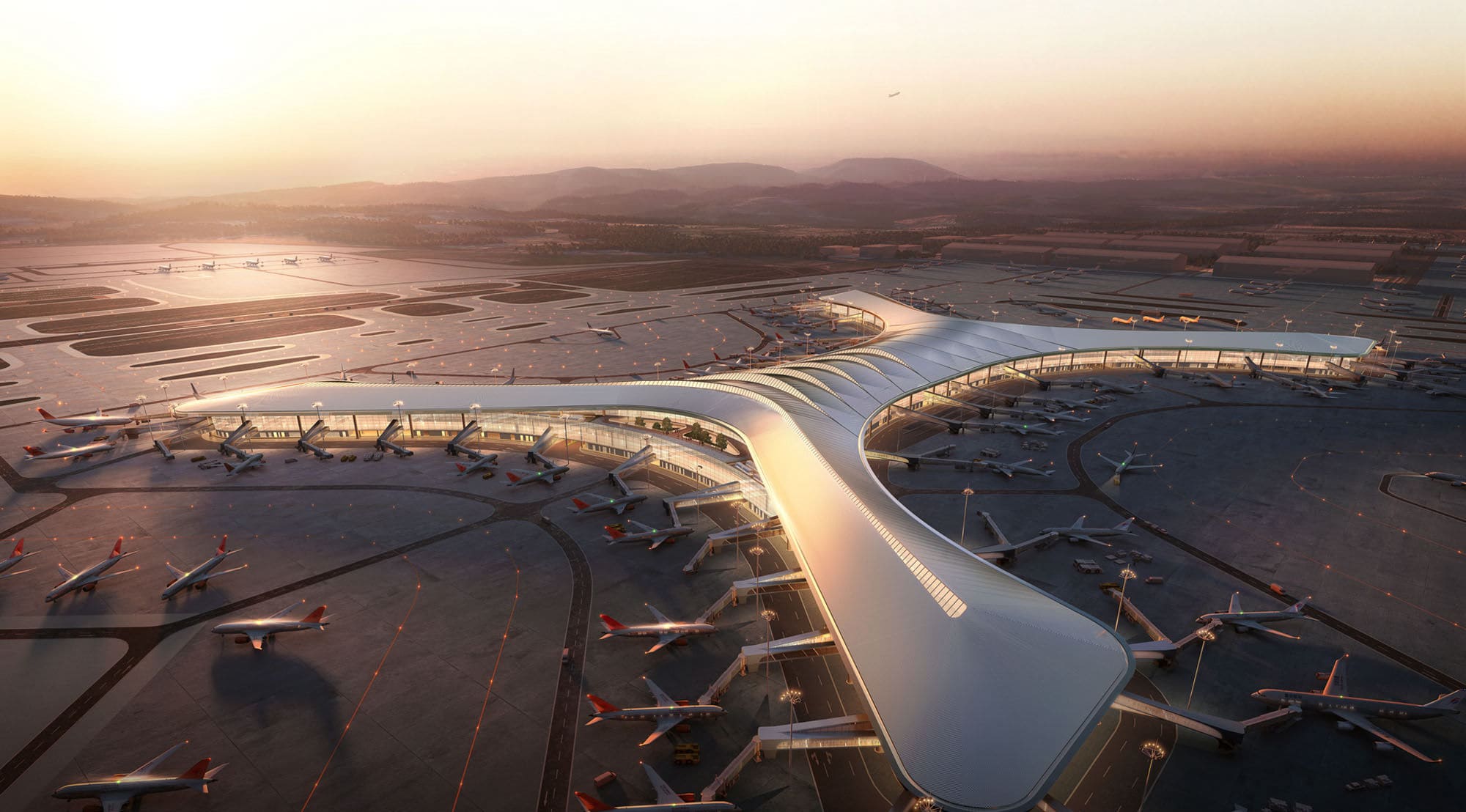 Fattori che influenzano i costi di rendering architettonico: Un immersione profonda
Fattori che influenzano i costi di rendering architettonico: Un immersione profonda
Ora che conosci i diversi tipi di rendering, Andiamo al nity-gritty: Ciò che effettivamente fa salire il prezzo di un rendering? Comprendere questi fattori ti aiuterà a prendere decisioni intelligenti e rimanere nel tuo budget.
Complessità del design: Il più intricato, Più costa
La complessità del tuo design architettonico è un fattore enorme nel determinare il costo di un rendering. Un semplice, L'edificio Boxy sarà molto più economico da realizzare rispetto a un design con molte curve, angoli, e caratteristiche uniche.
- Architettura intricata: Un edificio con molti dettagli unici, come tetti curvi o facciate elaborate, richiederà più tempo e sforzi per modellare e rendering.
- Numero di oggetti: Una scena interna con molti mobili personalizzati, decorazioni, e gli oggetti di scena aumenteranno anche il costo. Ci vuole solo più tempo per creare tutti quei dettagli!
Ovviamente, Ci sono momenti in cui potresti voler mantenere il livello di dettaglio più basso. Per esempio, Se stai solo brainstorming di idee per un progetto personale e non sei troppo preoccupato per la qualità finale, Puoi risparmiare denaro optando per un rendering più semplice.
Portata del lavoro: Più che sembrare l'occhio
Non si tratta solo dell'immagine finale; Si tratta anche di tutto il lavoro che si svolge dietro le quinte:
- Modellare la complessità: La creazione di un modello 3D dettagliato può essere un processo molto tempo. La modellazione di una foresta può richiedere ore, Ma la modellazione di un elettronico può richiedere settimane.
- Post-produzione: Alcuni rendering richiedono un vasto lavoro post-produzione in Photoshop o in altri software di editing di immagini. Questo può includere l'aggiunta di dettagli, Regolazione dei colori, e creazione di effetti speciali.
Tieni presente che questi compiti sono ciò che richiede più tempo. Quali articoli post-produzione sono necessari? Cosa deve prendere parte? Questo è ciò che avrebbe dovuto finalizzare l'ambito del progetto prima di iniziare.
Rendering di qualità e risoluzione: La ricerca del realismo
Il livello di realismo che stai cercando avrà un impatto significativo sul prezzo. Una qualità superiore significa più tempo, computer più potenti, e più competenze:
- Risoluzione: Immagini ad alta risoluzione (Come quelli necessari per i cartelloni pubblicitari) richiedono più potenza di elaborazione e tempo per il rendering.
- Fotorealismo: Raggiungere il vero fotorealismo richiede una meticolosa attenzione ai dettagli, Soprattutto quando si tratta di materiali, illuminazione, e trame. Questo richiede modellazione complessa? Questo aggiungerà più costi?
Un rendering fotorealistico che sembra una vera fotografia è molto più costoso di un più semplice, Immagine più stilizzata. Questo mostra anche quanto siano importanti i processi del flusso di lavoro.
Livello di dettaglio: Ogni bit conta
La quantità di dettagli di cui hai bisogno nel rendering influenzerà il prezzo. Cose come:
- Finiture/Specifiche dei materiali
- Soffrit
- Elettrodomestici
- Finestre
- Paesaggio
- Ordinare
- Rivestimento
- Interior design e arredi dettagliati
Se dovessi escludere il livello di dettaglio, influenzerebbe negativamente la capacità dell'immagine di metterle in relazione molto meglio. Dovrebbe esserci un buon equilibrio per mantenere un budget ragionevole ed essere comunque conveniente.
Cronologia del progetto: Il tempo è denaro
Hai bisogno del tuo rendering fatto al più presto? Preparati a pagare un premio! “Tasse di punta” sono comuni nel mondo del rendering, E possono aumentare significativamente il costo del tuo progetto.
- Lavoro straordinario: I lavori di punta spesso richiedono rendering artisti per fare gli straordinari, che ha un costo più elevato.
- Allocazione delle risorse: Gli studi potrebbero aver bisogno di estrarre risorse da altri progetti per rispettare la scadenza, che può anche aumentare i costi.
Se possibile, Pianifica in anticipo e concedi al tuo team di rendering un sacco di tempo per completare il progetto. Questo ti aiuterà a evitare quelle temute commissioni di punta.
Numero di visualizzazioni/immagini: Di più non è sempre più economico
Mentre potresti pensare che ordinare più immagini porterebbe automaticamente a un prezzo inferiore per immagine, Non è sempre così. C'è il costo da considerare, puoi negoziarlo e come?
Software e hardware: Strumenti del commercio
La creazione di rendering di alta qualità richiede potenti software e hardware. Questi strumenti hanno un costo, E quel costo è spesso preso in considerazione al prezzo del tuo rendering.
- Software di rendering: Il software di rendering professionale può essere molto costoso.
- Costi hardware: Sono necessari potenti computer per gestire modelli complessi e rendere immagini ad alta risoluzione. Alcune aziende usano persino “Renderms” - cluster di computer dedicati al rendering - per accelerare il processo.
Quale software dovrebbe e può essere utilizzato? Sono versioni autorizzate richieste? Tutte queste domande dovrebbero essere discusse durante il tempo del progetto.
Feedback e revisioni dei clienti: Ottenerlo giusto
Il numero di revisioni richieste influirà anche sul prezzo. La maggior parte degli studi di rendering include un certo numero di revisioni nella loro citazione iniziale. Tuttavia, Se hai bisogno di più revisioni di così, Probabilmente ti verrà addebitato un extra.
- Comunicazione chiara: Fornire un feedback chiaro e dettagliato è essenziale per ridurre al minimo le revisioni.
- Scope Creep: Apportare modifiche a progettazione significative a media ricerca possono anche portare a costi aggiuntivi, poiché richiede all'artista di rifare molto lavoro.
Comunicare con il tuo team per assicurarsi che non ci siano revisioni costose è la chiave. Quali sono i rischi, E quali sono i vantaggi? Un grande e lungo flusso di lavoro è importante per questo processo, Man mano che hai l'opportunità di dare un'altra occhiata prima che venga creato un prodotto finale.
Competenza ed esperienza dell'artista/studio 3D: Ottieni quello per cui paghi
Proprio come in qualsiasi professione, L'esperienza e l'esperienza dell'artista o dello studio di rendering influenzerà il prezzo. Gli artisti più esperti in genere fanno pagare di più, Ma tendono anche a produrre un lavoro di qualità superiore.
- Anni di esperienza: Gli artisti con anni di esperienza hanno una profonda comprensione delle tecniche di rendering, illuminazione, e materiali.
- Qualità del portafoglio: Un portafoglio forte è un segno di un artista esperto ed esperto.
Quando si seleziona quale studio scegliere, Dai un'occhiata ai clienti precedenti e alla qualità. Questo ti permetterà di avere più conoscenza dell'azienda con cui stai lavorando. Anche, è importante la comunicazione? Cosa puoi cercare quando guardi i rendering? Quali bandiere rosse esistono quando ci sono problemi di comunicazione? Tutte le domande che dovrebbero venire in mente quando si sceglie una squadra.
Tasse di licenza:
- Gli acquisti di software influenzeranno il budget per il servizio di rendering. Ci sono costi per programmi di rendering 3D gratuiti? È un argomento importante?
 Modelli di prezzi di rendering architettonico: Quale è giusto per te?
Modelli di prezzi di rendering architettonico: Quale è giusto per te?
Rendering Le aziende utilizza diversi modelli di prezzi. Conoscere le differenze può farti risparmiare denaro e assicurarti di ottenere il servizio di cui hai bisogno.
Prezzi per immagine: Semplice e diretto
Questo modello addebita un prezzo fisso per ogni immagine resa. Funziona bene per piccoli progetti in cui le esigenze sono facili da definire.
- Costo fisso: Conosci il prezzo per immagine in anticipo.
- Flessibilità: Facile da regolare il numero di rendering di cui hai bisogno.
- Adatto per: Progetti residenziali di base o singolo, viste ben definite.
Prezzi per progetto: Un approccio personalizzato
Qui, Ottieni una tariffa fissa per l'intero progetto, Basato sulla sua complessità e portata. Ciò si adatta a progetti più grandi che coinvolgono il web design, animazione, o più immagini.
- Completo: Copre tutti gli aspetti del progetto con un prezzo.
- Risparmio su larga scala: Chiedi sconti sul volume per ridurre i costi complessivi.
- Adatto per: Progetti complessi che necessitano di vari servizi, come planimetrie e animazioni 3D.
Tariffa oraria: Flessibilità per i progetti in evoluzione
Paga per il tempo dell'artista. Questa è una buona scelta se il progetto è dinamico e i requisiti potrebbero cambiare. Ma, Pianifica attentamente per evitare spese impreviste.
- Pagare per il tempo: Paga solo per le ore effettive lavorate.
- Per requisiti dinamici: Ideale per i progetti in cui l'ambito potrebbe evolversi nel tempo.
- Adatto per: Progetti con ambito incerto in cui preferisci tracciare i progressi e i costi attentamente.
Abbonamenti o offerte di pacchetto: Bag misto
Alcune aziende offrono abbonamenti o servizi confezionati. Questi potrebbero non essere sempre l'ideale se il cliente non prevede di utilizzare l'intero pacchetto.
- Servizi misti: I piani includono un mix di servizi per un periodo definito.
- Offerte doganali: Il prezzo varia in base ai servizi di pacchetto.
- Adatto per: Aziende che necessitano di supporto continuo e una serie di servizi coerenti.
 Intervalli di prezzo tipici per diversi progetti di rendering architettonico (2025 Dati)
Intervalli di prezzo tipici per diversi progetti di rendering architettonico (2025 Dati)
Abbattiamo ciò che puoi aspettarti di pagare per diversi tipi di progetti. Ricordare, Queste sono solo stime, E il prezzo finale dipenderà dai dettagli specifici del tuo progetto.
Progetti residenziali:
- Semplice rendering esterno: Tipicamente varia da $500 A $1,500 per vista. Ideale per design semplici.
- Rendering esterno complesso: Può variare da $1,500 A $3,000+ per vista per case più grandi o intricate.
- Rendering interni: A partire da $1,000 A $2,500+ per vista a causa di elementi dettagliati come mobili e illuminazione.
- 3D Rendering planimetro: Tipicamente varia da $350 A $600 per pianta.
Progetti commerciali:
- Semplice rendering esterno: I rendering di base di vendita al dettaglio o uffici vanno da $1,000 A $2,000+ per vista.
- Rendering esterno complesso: Per edifici commerciali complessi, Aspettatevi di pagare $2,000 A $5,000+ per vista.
- Rendering interni: Spazi commerciali complessi vanno da $2,000 Per superare $5,000+ per vista.
Tour di animazione e virtuali:
- 3D Animazione architettonica: I costi vanno da $5,000 A $15,000 al minuto.
- 3D Animazione dettagliata (Basato sulla CPU, Corona e vray): La spesa stimata è $60 A $150 Al secondo.
- 3D Animazione dettagliata (Basato su GPU, Lumion): Circa $20 A $100 Al secondo.
- 360 Tour virtuale o panorama: Media tra $750 A $2000 per progetto.
Altri rendering specializzati:
- 3D Rendioni aeree: I prezzi del progetto variano, da $450 – $1000.
- 3D REPRITTO DI PRODOTTO (Semplice): Aspettati i prezzi da $50 – $100.
- 3D REPRITTO DI PRODOTTO (Complesso): I progetti complessi possono variare tra $300 – $1000.
- 3D Restringimento del prodotto lifestyle: In genere i costi di rendering del prodotto 3D $250 – $550.
Ricordare, Il prezzo effettivo che paghi può variare in base ai fattori specifici che influenzano i prezzi del rendering architettonico, Quindi ottieni una citazione personalizzata. Per darti una breve comprensione, Ecco una breve tabella dei prezzi che sono stati menzionati sopra.
| 3D Servizi di rendering architettonico | Fascia di prezzo |
|---|---|
| 3D Rendering degli esterni (Residenziale) | $400 - $1500 |
| 3D Rendering degli esterni (Edificio commerciale) | $1000 - $10000 |
| 3D Rendering degli interni | $199 - $1000 |
| 3D Rendering planimetro | $199 - $900 |
| 3D Animazione architettonica | $5000 - $15000 |
| 3D Animazione dettagliata (Basato sulla CPU, Corona e vray) | $60 - $150 Al secondo |
| 3D Animazione dettagliata (Basato su GPU, Lumion) | $20 - $100 Al secondo |
| 3D REPRITTO DI PRODOTTO (Semplice) | $50 - $100 |
| 3D REPRITTO DI PRODOTTO (Complesso) | $300 - $1000 |
| 360 Tour virtuale o panorama | $750 - $2000 |
| 3D Rendioni aeree | $450 - $1000 |
| 3D Restringimento del prodotto lifestyle | $250 - $550 |
Tutti i seguenti prezzi possono variare, Il livello di competenza ed esperienza dell'artista/studio 3D, dovrebbe prendere in considerazione in quanto i prezzi di alcuni potrebbero essere più costosi. C'è un modo per valutare il livello di cui hai bisogno? Potrebbero esserci alcuni progetti che vengono in mente a questo proposito. Possiamo capire di più?
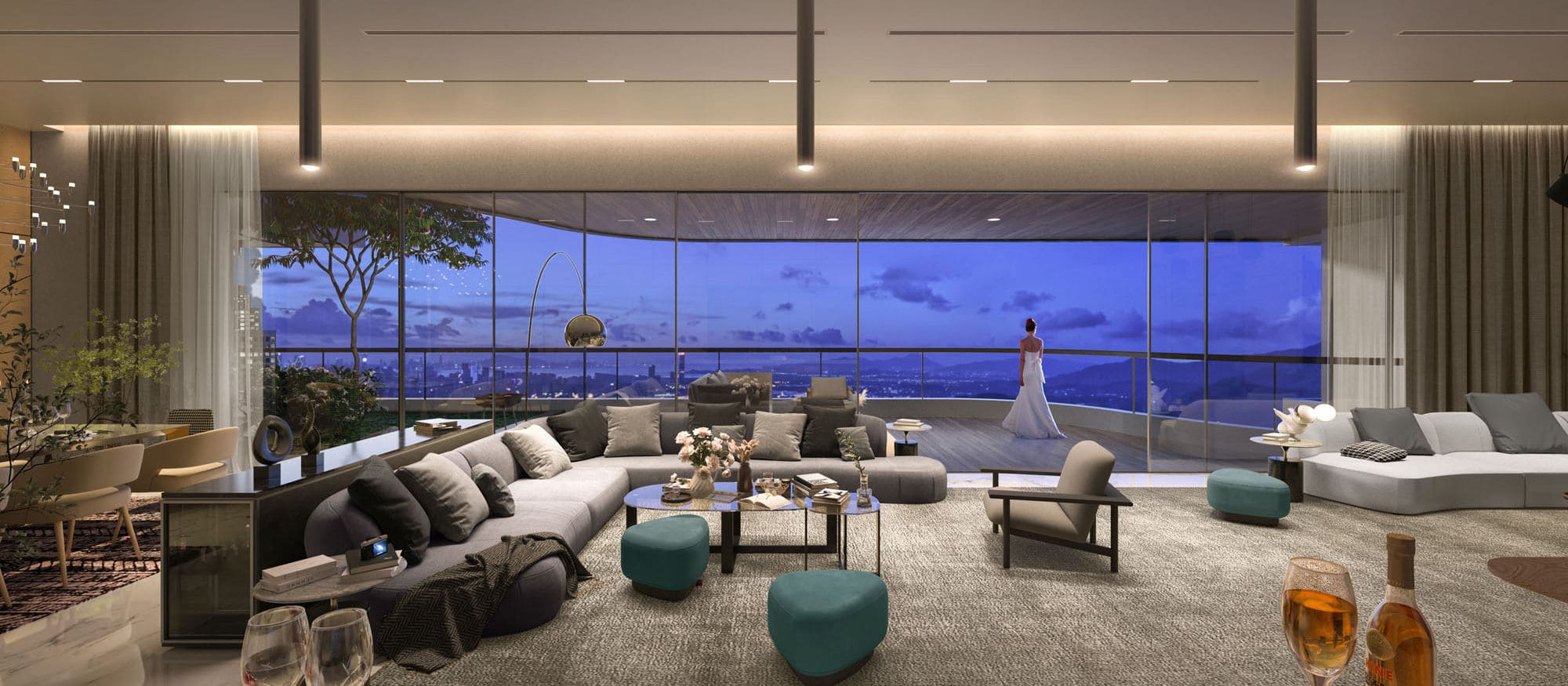 Decifrare i prezzi di rendering 3D: Quello che ottieni a diversi livelli di budget
Decifrare i prezzi di rendering 3D: Quello che ottieni a diversi livelli di budget
Esistono diversi livelli di prezzo all'interno del rendering. Ottenere ciò che vale i tuoi soldi e trovare il livello di servizio che si allinea sia con il progetto che sul budget è la chiave. Esploriamo ciò che definisce i prezzi nel regno dei rendering architettonici e ti diamo alcune informazioni per aiutare a fare scelte informate.
Fondo del prezzo di rendering del barilotto: $99-$200 Per immagine
- Caratteristiche: Spesso proveniente da all'estero o paesi con costi di vita più bassi, in genere aziende più piccole che possono operare con meno risorse.
- Aspettative di qualità: Qualità di base, che si concentra sulla quantità di rendering rispetto ai dettagli.
- Potenziali problemi: Spesso hanno sfide di comunicazione, diversi stili culturali di design, e può avere una consegna di qualità inferiore.
- Meglio per: Quando il lavoro di progettazione è nella fase concettuale e di alta qualità, Il prodotto lucido non è necessario.
Prezzo di rendering di base: $300-$400
- Caratteristiche: Gli appaltatori vengono assunti ma la direzione si verifica in genere a livello locale, con chiare capacità comunicative e talentuosi artisti 3D.
- Aspettative di qualità: Molto bene, in particolare, qualità rispetto al livello più basso di rendering.
- Meglio per: Un ottimo modo per ottenere prevendizioni immobiliari, Ottenere l'approvazione dello stile dagli organi di regolamentazione, e architetti con un budget limitato.
Prezzo di rendering di livello medio: $400-$3000
- Caratteristiche: Progettato per agenti immobiliari, designer, e architetti, di solito per le proprietà commerciali e residenziali.
- Aspettative di qualità: Lavoro di alta qualità con un occhio per i dettagli, Questi rendering bilanciano la qualità e il budget. Questi prezzi di rendering funzionano per la progettazione della casa di fascia alta, e progetti da medio a su larga scala.
- Meglio per: Ottimi progetti di marketing per attirare nuovi clienti, progetti di alta qualità da attirare potenziali investitori, E coloro che cercano di creare immagini straordinarie senza sacrificare il loro budget.
Prezzo di rendering di fascia alta: $3000-$14,000+
- Caratteristiche: Questo prezzo di rendering è in genere riservato alle grandi società in cui il prezzo non è un problema, Ma la qualità del rendering è della massima importanza.
- Aspettative di qualità: La massima qualità, Questi rendering dovrebbero essere gestiti solo da specialisti di rendering più esperti e ben informati. Ciò include anche progetti di riferimento più grandi.
- Meglio per: Un'azienda che cerca di lavorare con altri leader del settore, Materiale promozionale di fascia alta, e coloro che richiedono elevate garanzie e sicurezza con i loro materiali promozionali.
Il tavolo può aiutare a ottenere maggiori intuizioni, e aiutarti meglio a capire, Quello che stai cercando.
| Fascia di prezzo | Caratteristiche chiave | Ideale per |
|---|---|---|
| $99 – $200 | Affare, Visual di base, spesso esternalizzato, Pochi dettagli. | Progetti concettuali, Progetti fai -da -te, uso personale. |
| $300 – $400 | Gestito localmente, Qualità di fascia alta, Eccellente comunicazione | Progetti di architettura di base, e approvazioni normative |
| $400 – $3000 | Immagini di ottima qualità, Immagini eccellenti per case più grandi, qualità solida. | Architetti, esperti di marketing, designer, agenti immobiliari. |
| $3000 – $14000+ | Qualità di alto livello, gestito da specialisti di rendering esperti. | Società e clienti di fascia alta. |
 Navigazione dei termini e delle revisioni di pagamento
Navigazione dei termini e delle revisioni di pagamento
Conosci il tasso di rendering, ma cosa puoi aspettarti quando si tratta di pagamento e di ottenere le cose esattamente bene? La trasparenza e la flessibilità sono fondamentali.
Comprensione degli orari dei pagamenti
Una pratica comune è quella di dividere i pagamenti in due rate. Questo di solito implica ciò che è richiesto il deposito. Avendo 50% del deposito ti farà iniziare, avere l'altro 50% richiederà al completamento del progetto.
- Il deposito viene utilizzato per allocare le risorse e garantire l'impegno.
- Ti assicura di rimanere in controllo del progetto e di essere soddisfatto del risultato finale.
Padroneggiare il processo di revisione
I rendering possono richiedere del tempo per finalizzare. A seconda della compagnia con cui stai collaborando, Possono impiegare molto tempo per completare il lavoro, E questo deve essere esaminato prima di lavorare con loro.
- Viene offerto un minimo di due settimane per apportare le modifiche necessarie ai progetti, illuminazione, e materiali.
- Qualsiasi revisione oltre a ciò, deve essere affrontato. Ne vale la pena? Questo può essere discusso con l'azienda.
Comunicare chiaramente & Conciso
Per evitare spese di pagamento, è necessario rimanere consapevoli del tempo. Includendo tutte le parti che si trovano sulla stessa pagina quando si tratta del flusso di lavoro, ti assicurerai che tutti siano allineati.
- Quando si trasmettono feedback dal team al tuo provider, È utile essere coerenti nel fornire il tuo feedback per evitare di superare i pagamenti e ciò che è necessario.
- Specifiche di progettazione dettagliate, e impostare una comunicazione chiara può aiutare un'operazione senza soluzione di continuità.
Lavorare insieme e creare un sistema senza soluzione di continuità per tutte le parti da includere è un ottimo modo per iniziare.
 Come ottenere un preventivo accurato: Una guida passo-passo
Come ottenere un preventivo accurato: Una guida passo-passo
Ottenere un preventivo accurato fin dall'inizio è essenziale per un'esperienza di rendering regolare e senza stress. Ecco una rottura per assicurarti di capire cosa includere.
Guida passo-passo
- Raccogli un brief del progetto dettagliato: Inizia ottenendo informazioni con la tua visione e tutto ciò che è coinvolto. Hai bisogno di una descrizione o di piani architettonici? Quindi affermalo.
- Piani architettonici e modelli 3D: Presentazione di un progetto 3D accelerato. Questa è la chiave per farsi allineare tutti per l'obiettivo principale, Quindi tutto ciò che è richiesto è il rendering di qualità piuttosto che molta modellazione. Ciò consentirà all'azienda di rappresentare accuratamente il proprio lavoro.
- Viste & Angoli: Determina quante viste hai bisogno e quali angoli della fotocamera vorresti vedere? Ci sono angoli che dovrebbero essere evidenziati? Che dire degli aspetti chiave da esaminare quando determinano? Questo ti aiuterà nell'obiettivo generale.
- Diritti di licenza: Chi userà il tuo progetto una volta completato? È usato solo in determinati periodi.
- Cronologia del progetto: Fornire traguardi di squadra e dettagli importanti per pianificare.
- Notare le richieste più specifiche: Prendi appunti di tutte le cose che vorresti fare la tua squadra.
- Confronta e valuta: Valuta il livello di professionalità da tutte le società di rendering. Controlla i riferimenti e le recensioni per assicurarti di fare ciò che dovrebbero.
Entrare per un progetto può sempre sembrare intenso, Ed è per questo che è importante essere pazienti.
 Strategie per ridurre i costi di rendering architettonico
Strategie per ridurre i costi di rendering architettonico
Lavorare con un budget limitato? Nessun problema! Ci sono alcuni trucchi intelligenti per abbattere il prezzo dei tuoi rendering architettonici senza sacrificare la qualità.
Elementi chiave per il taglio dei costi
- Requisiti: Avere obiettivi chiari significa tagliare gli sforzi sprecati. Presenta chiaramente ciò che vuoi aiutare i fornitori di servizi 3D.
- Livello di dettaglio: Più dettagli aggiungi, Più a lungo potrebbe richiedere. Quali elementi sono richiesti? E se è così, Cosa puoi fare per aiutarlo a renderlo più economico.
- Materiali di riferimento: Le informazioni accurate o i disegni di riferimento influiscono su come risultano i materiali? Fornire al team per fare riferimento ai materiali dettagliati è la chiave.
- Attività: Di quali modelli hai bisogno? Cosa succede se ci sono attività pre-progettate? Potrebbe anche essere importante nel processo.
- Collaborare team: Come sarai coinvolto, o come fa tutti a portare tutti a un obiettivo comune? La comunicazione chiara con il team è la chiave.
- Rendering Timeline: Abbiamo un tempo di rendering efficace? Ciò che ha suggerito la cronologia del provider 3D? Potrebbero esserci ottimi consigli per ottimizzarlo di più.
- Valutare animazione/elementi: Questo potrebbe non essere necessario se solo pochi componenti devono essere resi al progetto, Ciò significa che alcune cose devono essere tagliate. Richiede di concentrarti solo sulle cose chiave.
In questo modo, Non solo consente al tuo team di completare il progetto in modo più efficiente, Ma prendendo il tempo per prepararsi e esaminando ogni aspetto del progetto, puoi risparmiare molto.
 Scegliere il giusto partner di rendering architettonico
Scegliere il giusto partner di rendering architettonico
Trovare il partner giusto può essere difficile, Soprattutto quando si tratta di rendering 3D. Di quali qualità hanno bisogno le aziende di rendering? Entramoci.
- Portfolio: Le visioni corrispondono a ciò che stai cercando? Rappresenta il tuo attuale stile di design? Come può connetterti tutti? Il portfolio e i disegni aiutano a vedere tutto ciò che viene alla luce e aiuta a vedere come puoi rappresentare al meglio la tua visione.
- Competenza: Sono certificati? Potrebbe esserci qualcosa in cui sono abili. L'uso di attrezzature e conoscenze è un must per quei professionisti che sanno come fare le loro cose.
- Revisione: Le recensioni dei clienti sono fondamentali. Ci sono alcune aziende che potrebbero nascondere riferimenti precedenti per evitare di vedere il lavoro passato.
- Gestione del progetto: Quanto bene lavorano con gli altri? Esiste una comunicazione chiara? Ti spiegano bene le loro politiche al cliente e danno un ottimo guasto?
 Errori comuni da evitare quando il budget per i rendering architettonici
Errori comuni da evitare quando il budget per i rendering architettonici
Anche con tutte le informazioni che hai, È facile inciampare! Evita questi busters budget per rimanere in pista:
- Complessità del progetto: Con vista sull'importanza di pianificare i piccoli dettagli, Quale, a sua volta, può influire sul prodotto.
- Concentrarsi solo sul prezzo: Qual è il valore della qualità? L'azienda ha ciò di cui ha bisogno per mostrare il valore corretto nella tua visione? Cosa dovresti dare la priorità?
- Portata del lavoro: Un flusso di lavoro adeguato fa molto per mostrarti come le cose si uniscono per una squadra.
- Beni di alta qualità: Avere tutto ciò che allinea porterà la tua squadra allo stesso obiettivo di ottenere risorse di alta qualità.
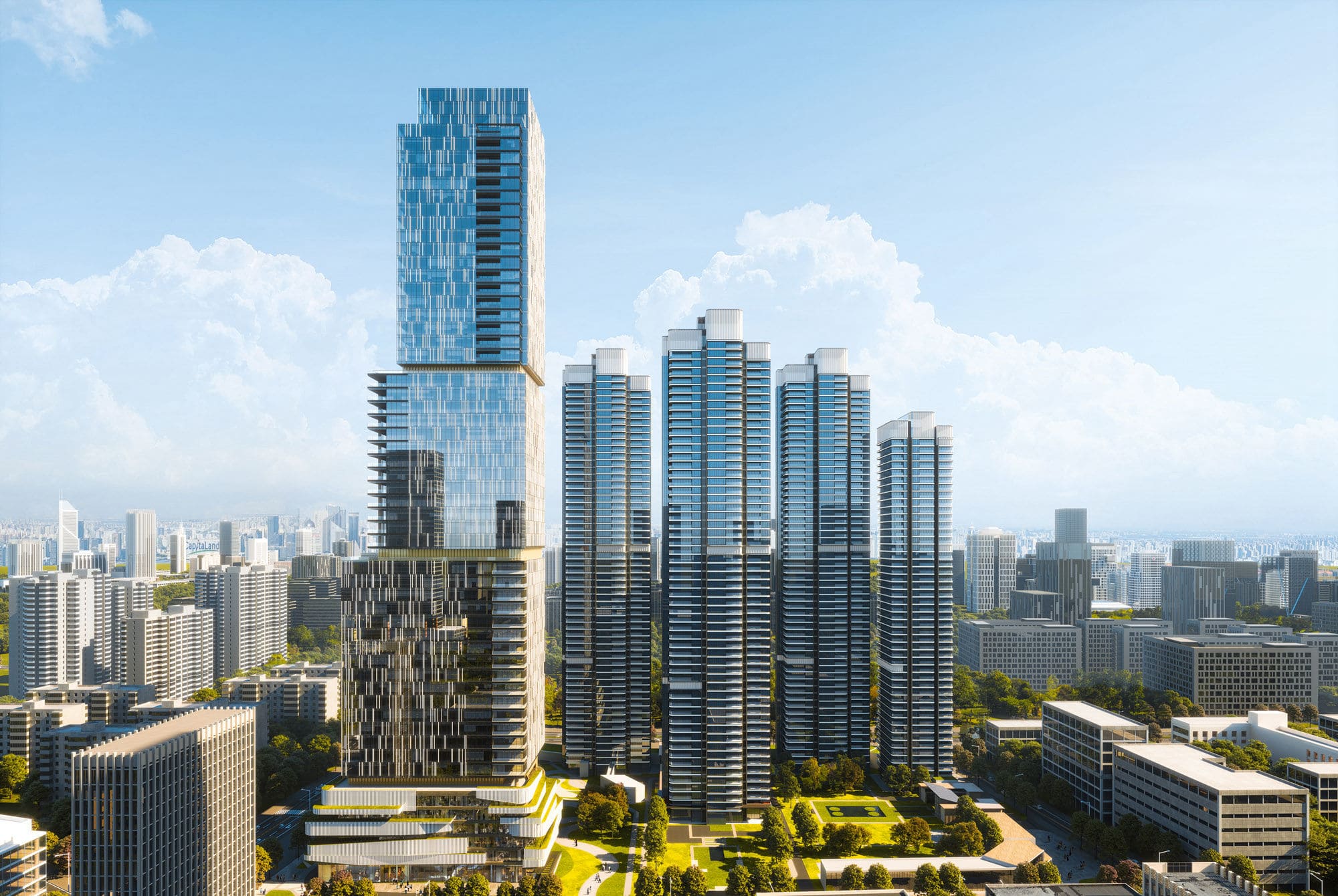 Domande frequenti (FAQ)
Domande frequenti (FAQ)
Avere ancora domande? Affrontiamo alcune domande comuni.
- Quanto dovrei addebitare per i rendering 3D? Per il rendering di prodotti 3D di alta qualità, Il costo in genere varia tra $50 E $700. Progetti più intricati possono costare $500 – $5,000+.
- Quanto costa la visualizzazione 3D? A livello globale, 3La visualizzazione D può variare tra $200 E $1,500, e dipende da alcuni requisiti.
- È redditizio rendering 3D redditizio? Con l'ascesa di immagini di qualità 3D, Gestire un'azienda per fare quel servizio è fantastico. Tuttavia, dipende dall'affidabilità dell'azienda per determinare tale valore.
- Quanto tempo ci vuole per rendere un design? Ci possono essere molti fattori che si mettono in atto, e uno è dimensione o complicazione. Tuttavia, che dovrebbe essere discusso con l'azienda.
- La modellazione 3D è costosa? 3D rendering è sempre in fase di implementazione. Questo potrebbe diventare più economico con la nuova tecnologia sulla sua strada, Sta a te rimanere in giro per comprendere il processo del tuo team così com'è per mantenere tutti i collegamenti su ciò che deve essere fatto per vedere il progetto avere successo.
- Quali sono i vantaggi dell'outsourcing 3D di rendering di uno studio professionale? Puoi anche vedere immagini rapide e di alta qualità con essa specializzato per elaborare il tuo lavoro. Ciò ti consente di connetterti con loro in ciò che deve essere fatto e fare alcune cose giuste.
- Esistono diversi modelli di prezzi per i servizi di rendering 3D? SÌ, Ci sono opzioni come ogni ora, fisso, il conteggio delle immagini, Dipende da un'azienda a base aziendale.
- Come posso garantire la migliore qualità per i miei rendering 3D? Resta organizzato e lavora a stretto contatto con il tuo team. Più sei organizzato, Migliore sarà il tuo progetto! La comunicazione è la chiave.
- Come faccio a scegliere la giusta azienda di rendering 3D? La ricerca è fondamentale. Cerca portafogli e vedi altri clienti. Qual è il loro obiettivo e ciò che cercano permetteranno di vedere se ciò che hanno pianificato è ciò che possono realizzare. La comunicazione farà andare anche quella connessione.
- Cosa succede se il mio progetto cambia a metà rendering? Fai sapere alla squadra in modo che possano essere apportati regolamenti! E preparati ad accettare che potrebbe costare extra.
- Quali sono alcune migliori pratiche per la gestione delle aspettative dei clienti per i rendering 3D? Avere una comunicazione adeguata aiuta a impostare tutte le giuste aspettative al team. Anche, Sii chiaro sulle tue aspettative per assicurarti che tutto ciò che desideri sia messo in pietra.
- Quale software viene generalmente utilizzato per il rendering architettonico? In genere i software più costosi, Aiuta a chiedere e vedere cosa fornisce l'azienda in modo da poter ricercare ciò che puoi aspettarti.
 Conclusione
Conclusione
La navigazione dei costi di rendering architettonico è un mix di arte e scienza. Devi entrare preparati con il maggior numero di fatti e chiarezza. Ti aiuterà a essere sulla strada giusta per il successo. In modo da non calpestare le rocce!.
- Il costo dipende da fattori come l'ambito, qualità, E la squadra che scegli.
- Pensa attentamente a ciò che conta di più per il tuo progetto e fai un elenco di priorità! .
- I rendering di alta qualità valgono la pena perché dimostra che tu e il tuo marchio siete di alta qualità.
Prendi ciò che hai imparato e ottieni una citazione personalizzata. Diamo vita al tuo design!.



